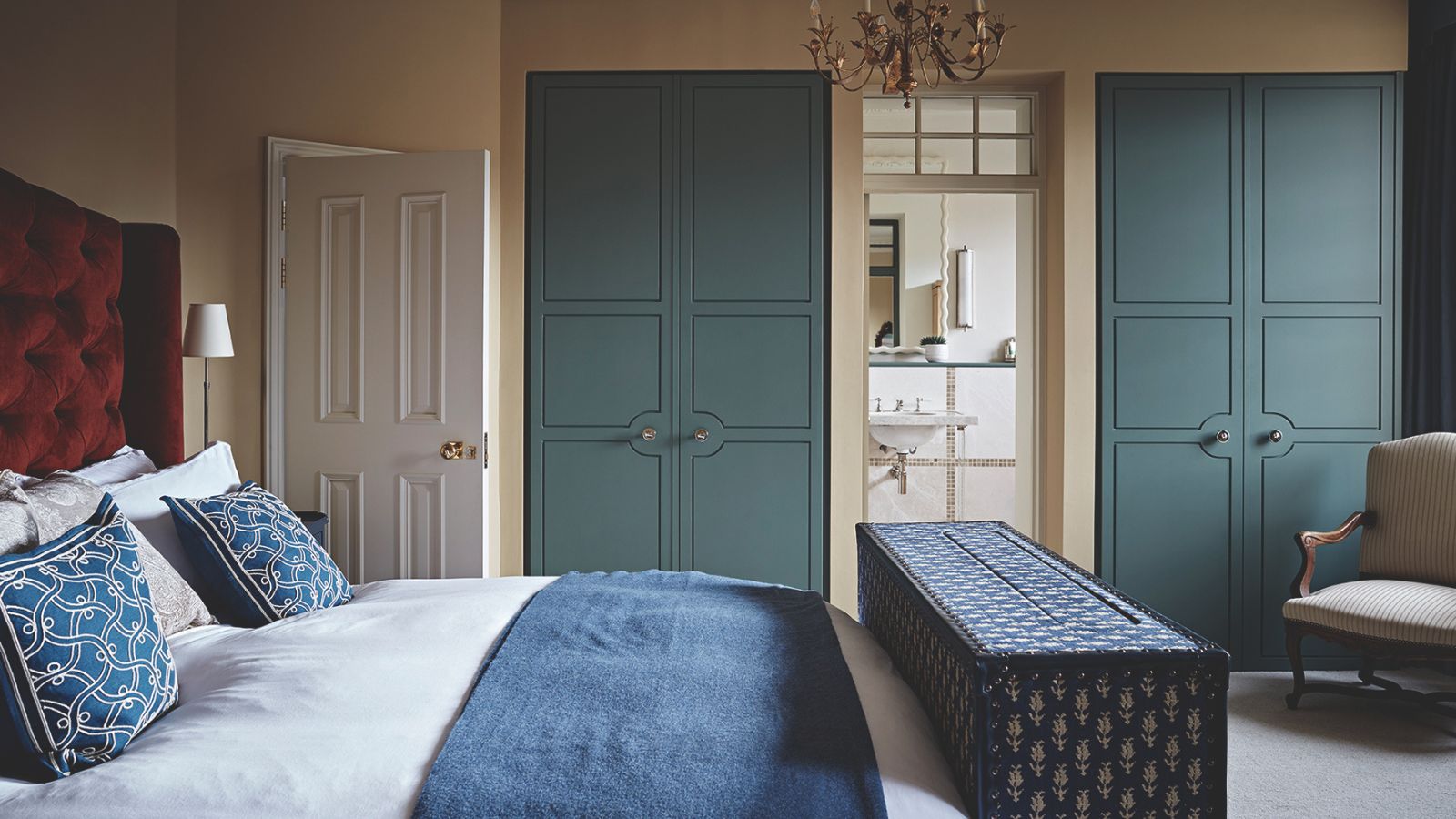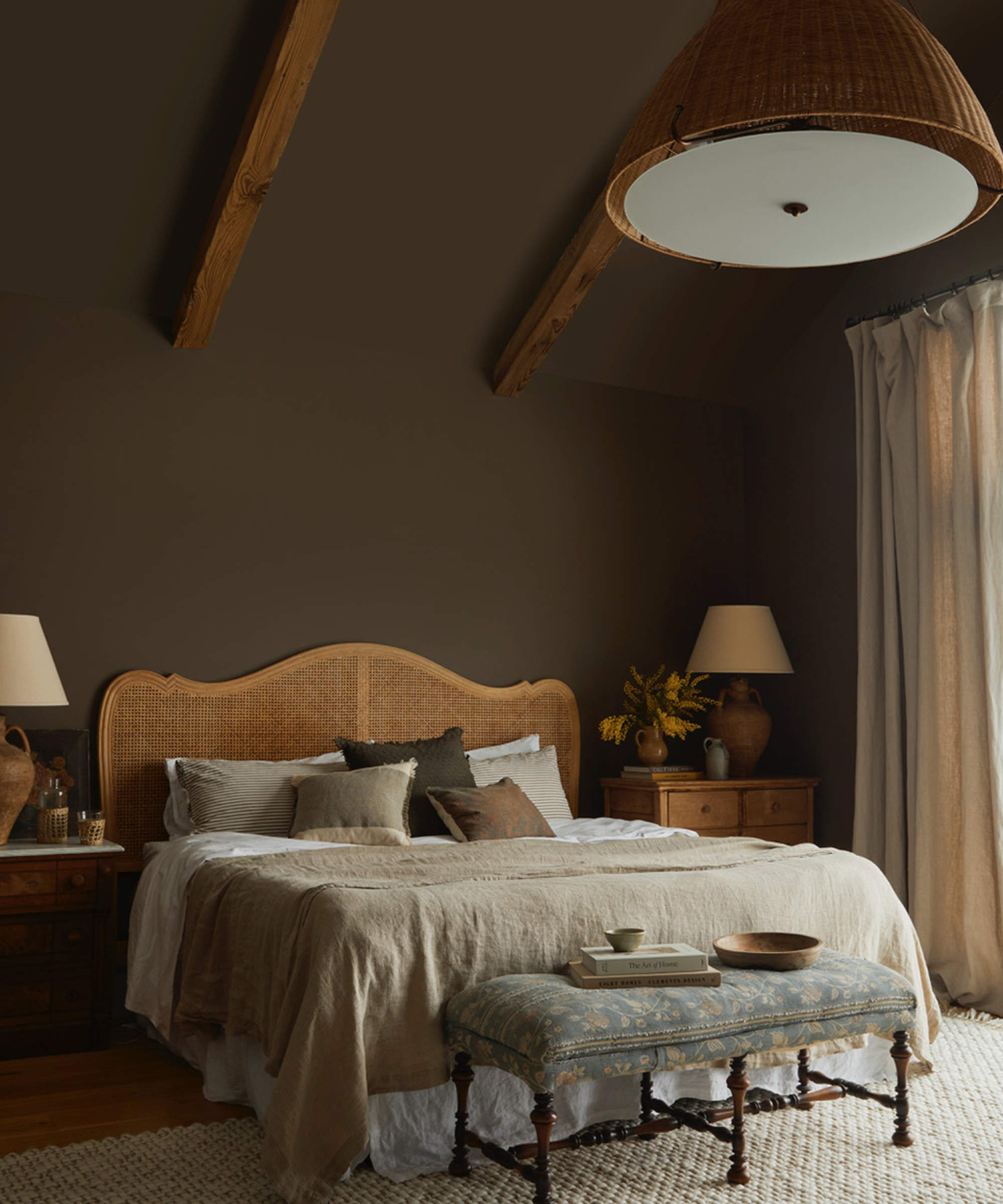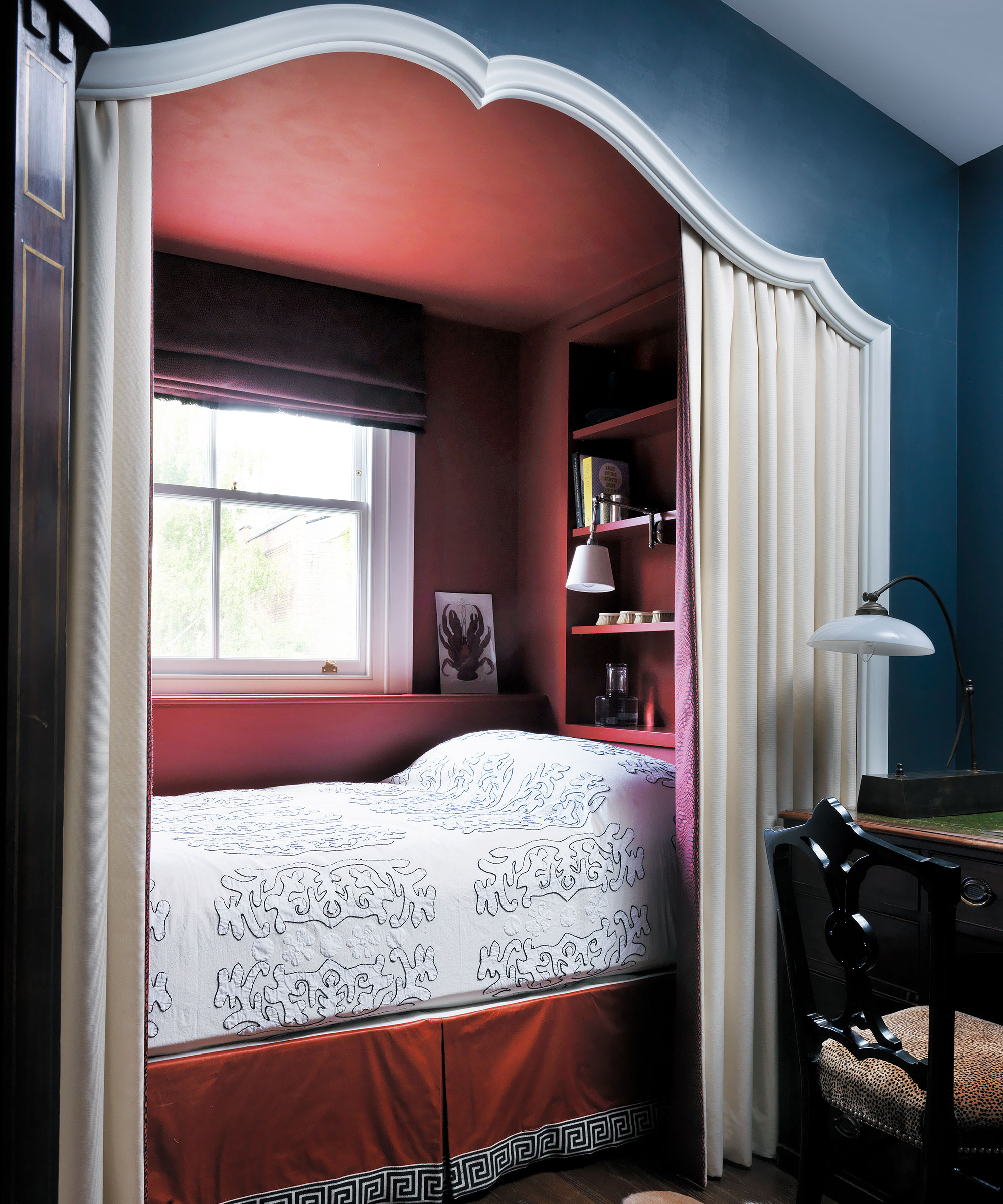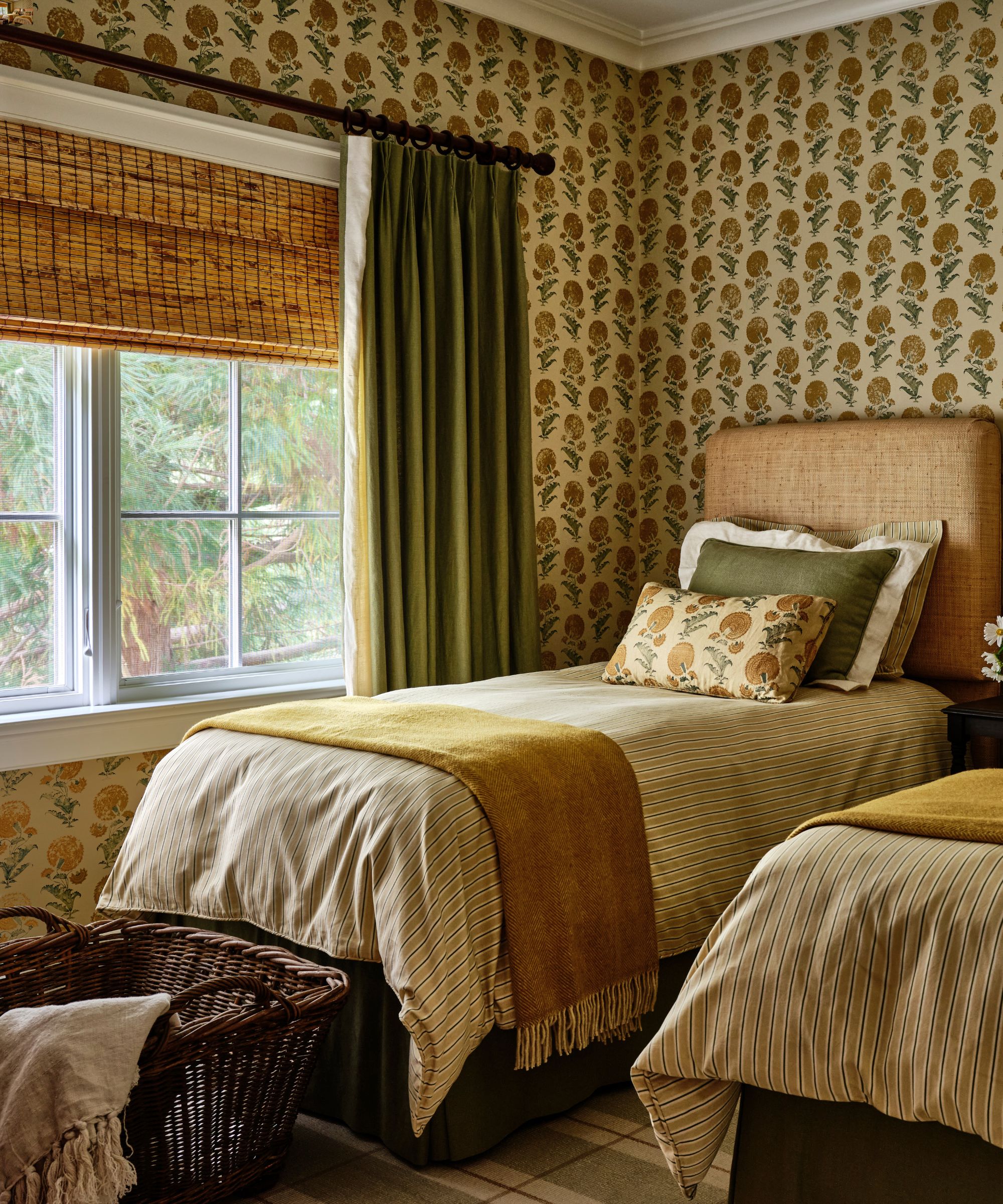The One Color Designers Always Avoid in Guest Bedrooms (and What to Use Instead)
Spoiler: they all favor bolder hues


Color plays a huge part in the atmosphere of a bedroom, especially when it comes to your guest space. You want the room to feel inviting, cozy, and relaxing, yet at the same time, make a design statement that leaves guests in awe.
And while you might think white is the safest choice for your guest bedroom color – it's classic, timeless, and neutral – designers say otherwise, preferring to use this occasional room as a place of bold design and experimentation.
Here's why they avoid the safe option, and recommend a bolder look instead – with their approach, your guest room will feel like a boutique hotel and become the talking point of your home.

We've all been there – deciding on the right decor and color palette for your guest bedroom and landing on the safe and comfortable choice of white. It feels clean, minimal, and free of judgment. But for designers, it's a color they say you should avoid.
'A guest room is the perfect place to take design risks. It’s a space where you can embrace color more experimentally and create a cozy, memorable retreat your guests will love,' says Heather French of French & French Interiors.
And, let's be honest, white doesn't do any of these things. There's nothing memorable or risky about this neutral hue. It just feels like a wasted opportunity to create a special design that wows your guests.
Think about the coziest, most impressive hotel rooms you've stayed in, like the bright, design-focused rooms in Hotel de la Boetie in Paris or the moodier schemes synonymous with Soho House. They become a pillar of luxury, with rooms that leave you inspired and captivated. It's an ethos you can bring to your own guest bedroom by ditching the white paint and replacing it with the right color palette.
Design expertise in your inbox – from inspiring decorating ideas and beautiful celebrity homes to practical gardening advice and shopping round-ups.

'A guest room is a “jewel-box” space. Because it’s used in short, memorable bursts, not every day, it can carry more saturation without feeling overwhelming. Bold paint turns a spare room into a small experience: moody, cozy, and intentional, the way great boutique hotels make a stay feel special,' adds interior designer Ami McKay.
There's also a sense that your guest room is the space to try out that more experimental design that felt too bold for the main bedroom. In many ways, your guest bedroom is to your main bedroom what a powder room is to a primary bathroom.
'Guest bedrooms are a great place to play with color. You may be afraid to do something that ends up feeling too bold in your primary bedroom, or experimenting with wallpaper or a pattern that is a big adjustment. Use the guest bedroom as your guinea pig to pull yourself out of your comfort zone,' suggests Amber Guyton of Blessed Little Bungalow.

But if white isn't an option, what colors should you look to instead?
'I love jewel tones,' says Amber. 'A deep emerald green or navy blue is pretty universal and plays well with both neutrals and other colors. They also offer a calming palette that is rest-friendly and will make the room feel like a boutique hotel!'
There's a misconception that embracing a bolder scheme means you have to go for a bright, vibrant hue, but that isn't the case at all. In fact, one of the most favored approaches by designers is decorating with moody colors.
'Bold doesn’t have to mean bright. Look for hues with depth, tones that are a bit muddier yet still rich and saturated. Think moody, layered color rather than loud. And don’t forget the ceiling: painting it the same shade can transform a room from simple refresh to full-on design statement,' explains Heather.
'We’re loving Chappell Green by Farrow & Ball – it's a subdued blue-green that feels both cheerful and grounded. It strikes the perfect balance between welcoming and sophisticated,' she adds.

There's a reason these moodier colors appeal in a guest bedroom. 'Our brains associate darkness with sleep and “hibernation,” which is why moody bedrooms can be so restful. A guest room is the perfect place to be brave. You’ll give visitors a beautiful memory, and your home an extra layer of personality and texture, without sacrificing serenity,' explains Ami.
She also recommends looking to nature for guidance if you want to create a bolder look with timeless appeal. Deep, earthy tones offer that look while still feeling warm, cozy, and design-focused, such as Benjamin Moore's Dark Olive and Farrow & Ball's Cardamom.
'Deep olive, slate blue, rust, and terracotta are all saturated but timeless; they have grounding undertones that keep a room feeling calm, not chaotic. Texture also matters: layer natural woods, woven textiles, or brass accents to balance the pigment with warmth,' she explains.

You can also still embrace neutrals – just in a more elevated way than white. Think beige, taupe, and even terracotta hues color drenched in the guest suite. Or, you can take an entirely different approach with a statement bedroom wallpaper.
'I love Belarte Studio’s hand-painted wallpaper collections. There’s something soulful about the way they blur art and atmosphere. A softly washed, brush-stroked mural behind the bed brings boldness in a beautifully intentional way,' Ami notes.
'Rather than relying on pattern or pigment alone, their wallpaper creates movement and mood, turning a guest room into an experience that feels distinctive and unexpected.'
Avoiding white in your guest bedroom doesn't mean you have to adopt a completely different aesthetic from your usual design style. It's about creating a room that feels warm, cozy, and elevated – designing a space that creates an experience and wraps your guests in luxury and wonder, rather than a sense that they've been assigned your bland, unfinished spare room.
This is your sign to put down the white paint and embrace a bolder, more experimental look in your guest bedroom. 'Paint is temporary and can easily be changed,' reminds Amber. 'Don't be afraid to experiment and do something different!'

I’ve worked in the interiors magazine industry for the past five years and joined Homes & Gardens at the beginning of 2024 as the Kitchens & Bathrooms editor. While I love every part of interior design, kitchens and bathrooms are some of the most exciting to design, conceptualize, and write about. There are so many trends, materials, colors, and playful decor elements to explore and experiment with.